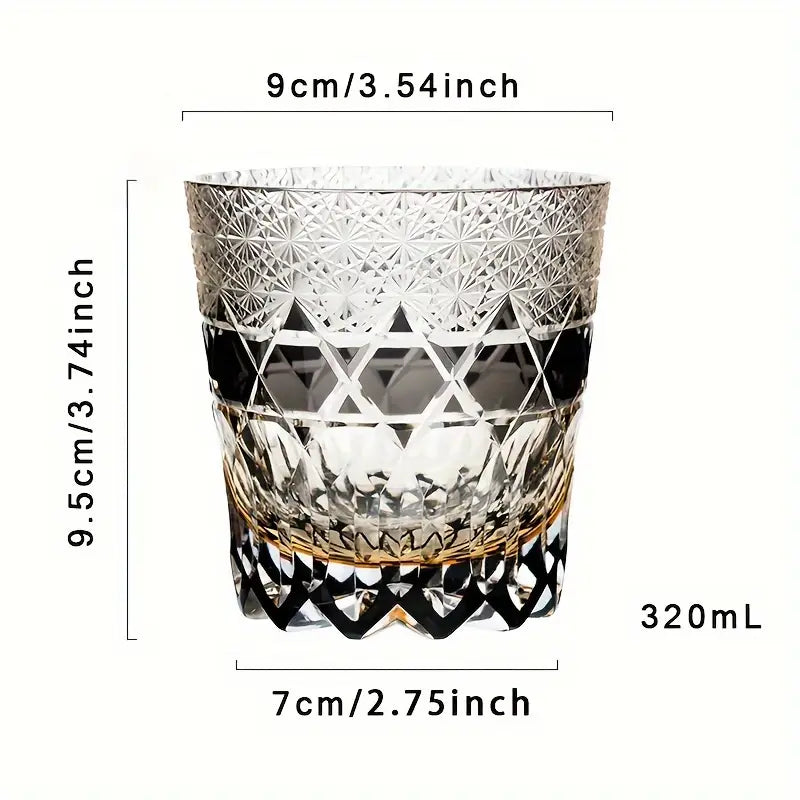upstagedliving
Edo Kiriko Whiskey Glass – High-End Hand Carved Crystal
Edo Kiriko Whiskey Glass – High-End Hand Carved Crystal
Couldn't load pickup availability
Secure Checkout With





High-end hand-carved crystal whiskey glass, a timeless luxe accent for home use or sophisticated hosting. Detailed craftsmanship that elevates every pour with refined allure. Available in Amethyst or Midnight.
Extremely limited stock.
Ships in 7 to 15 working days
The History of the Edo Kiriko Technique
Edo Kiriko is a traditional Japanese glass-cutting technique renowned for its intricate patterns and vibrant colors, originating in Tokyo (formerly Edo) during the Edo period (1603-1868). The technique involves engraving fine designs on the surface of colored glass, creating a dazzling interplay of light and shadow that distinguishes it as Japan's most famous glass craft.
Origins in the Edo Period
The roots of Edo Kiriko trace back to the early 19th century, specifically 1834, when Kagaya Kyubei, a glass craftsman in Edo, began experimenting with cut glass techniques. Glassmaking was introduced to Japan by Dutch traders during the Edo period, providing the foundation for local artisans to adapt foreign methods. Kyubei's innovation involved using emery powder to incise detailed patterns on glass, blending Japanese aesthetic sensibility with European cutting styles. This marked the birth of Edo Kiriko, initially used for everyday items like vases and cups, reflecting the period's flourishing artistic expression.
Evolution in the Meiji Era and Beyond
The technique evolved during the Meiji era (1868-1912), when it reached its current style and gained popularity by 1888. Artisans refined the process, incorporating colorful overlays (e.g., red or blue glass layered on clear bases) and precise cuts using wheels to create geometric patterns like nanako (fish roe) or kagome (basket weave). In 1985, Edo Kiriko was designated a Traditional Craft by Tokyo's metropolitan government, and in 2002, by Japan's Ministry of Economy, Trade and Industry, ensuring its preservation.
Modern Adaptations and Cultural Significance
Today, Edo Kiriko artisans like those at Horiguchi Kiriko continue the tradition, blending classic patterns with contemporary designs. The technique symbolizes Japanese craftsmanship's fusion of heritage and innovation, with pieces often used for special occasions or as gifts
Share















